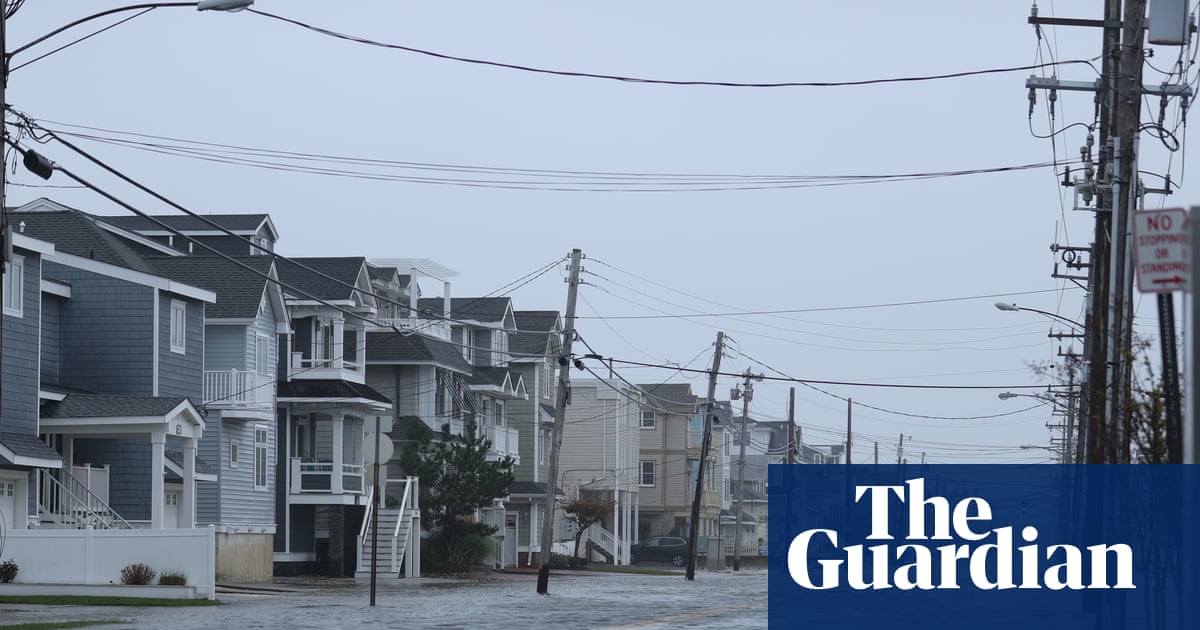Beans are affordable, accessible and versatile – delicious in dense salads and creamy sauces alike.
They grow worldwide and are good for the planet, enriching the soil they sprout from with nitrogen while emitting fewer greenhouse gases and requiring significantly less land and water per gram of protein than any animal source. Thanks to enormous diversity, more than 400 varieties are used in culinary contexts, some of which are gorgeous to boot.
Yet fewer than 20% of Americans eat the daily half cup of beans recommended by health authorities, and in the UK more than 40% of the population eat no beans at all. Crucially, they are healthy – with a capital “H”. What makes them so? And should we make room for more beans in our diet?
Are beans nutritious?
Beans “definitely don’t get enough love, in my opinion”, says Roxana Ehsani, a Miami-based registered sports dietitian, “but they’re really a true nutritional powerhouse”. That’s because beans are a good source of both fiber and protein while being free of saturated fat, says Ehsani. One cup of cooked beans will net you about 18g of protein, about 32% of the daily recommended amount for a 155lb adult.
You may have heard that beans are not a “complete” source of protein, meaning they don’t provide all nine of the amino acids our bodies need for optimal health. But Ehsani says that anyone eating beans along with other protein sources throughout the day, such as whole grains, nuts, seeds, eggs, dairy and/or animal protein, is more than covering their bases.
Beans are also packed with “shortfall” nutrients: micronutrients that can fall through the cracks of our typical eating habits. One recent study by the University of Toronto nutrition researcher Yanni Papanikolaou focused on the effect of adding a serving or two of beans to the typical American diet. Papanikolaou, who has been studying the nutritional relevance of beans since 2007, determined that adding one daily serving of beans to the average diet boosts fiber intake by 77%, and is better for restoring shortfall nutrients than taking a multivitamin.
“When you consume a whole food like beans, you not only get several shortfall nutrients, like dietary fiber, potassium, magnesium, folate and choline, but also many other plant bioactives that together have synergistic effects,” says Papanikolaou. “Improved diet quality has been linked to reduced risk of death and a better quality of life.”
Are beans a healthier protein source than red meat?
While red meat in moderation can be part of a balanced diet, beans are an overall healthier protein source thanks to their high fiber and low fat content.
Americans and people in the UK eat about a pound of red and processed meat a week, exceeding the upper limit suggested by health authorities like the American Heart Association by roughly 25%.
Substituting beans for some of that red meat would cut saturated fat intake. An excess of saturated fat is associated with elevated diabetes risk and worse cardiovascular health, raising “bad” LDL cholesterol and promoting the formation of plaque in arteries.
“When people substitute beans for red meats, their cardiovascular disease risk lessens,” says Dr Teresa Fung, a professor of nutrition at Simmons University and member of the Dietary Guidelines Advisory Committee for the US Departments of Health and Human Services and Agriculture. (The committee recently advised the federal government to emphasize beans as a protein source over meat in the official dietary guidelines.) The high fiber content of beans can help lower bad cholesterol, which can reduce the likelihood of developing cardiovascular disease.
Beans’ low glycemic index and “high fiber content can help keep our blood sugar stable so we’re not experiencing spikes or falls” that can contribute to the development of diabetes, adds Ehsani.
Can beans help with weight loss?
Beans’ high protein and fiber content help “keep you full for longer so you’re less likely to overeat” or snack between meals, says Ehsani. They’re also a lower-calorie substitute for red or processed meats.
Papanikolaou’s research found that adults who ate about two cups of beans a day “weighed 2.5kg [5.5lb] less and had waists that were 2.3cm [0.9in] smaller than those who avoided beans altogether”, he says.
“Adult dietary patterns with increased bean consumption are associated with lower added sugar, improved weight-related outcomes and better diet quality,” he adds.
after newsletter promotion
Why is adequate fiber intake important?
You probably know that fiber is really good for you. But what exactly does it do?
“Fiber is a prebiotic. It’s fuel for the good gut bacteria” in the stomach, says Fung. The gas we associate with eating beans is “produced by the bacteria in our gut fermenting the bean’s insoluble fiber”, which gels in our intestines, trapping bad cholesterol, she explains. That fermentation process creates beneficial compounds called short-chain fatty acids, which lower inflammation, support immunity and improve metabolism.
If you’re not used to eating a lot of fiber, it can take time to adjust to the growth and activity of your intestinal flora. If you’re interested in increasing your bean uptake, start with a small amount – like a quarter cup added to a wrap or salad, Fung advises: “Let your digestive system and the bacteria get used to it.”
Over time, this microbial partnership pays off. “Having regular and more poops has numerous benefits,” says Papanikolaou, “including better overall digestive health and function, improved removal of waste and toxic compounds, and reduced risk of bloating and constipation. All of these factors combined lead to a substantial improvement in wellbeing, which translates to a happier individual.”
What is the best way to eat beans?
Dried and canned beans are equally nutritious. However, the latter require less time to prepare. If you’re using canned beans, “rinse off the solution that they’re sitting in”, says Ehsani. “There’s some research showing that rinsing them can reduce the sodium in canned beans by about 40%.”
Dried beans need time to soak and cook. Fung suggests cooking them on the weekend, then freezing them in small portions. “I call these my emergency protein,” she says. “When I’m really busy and I have no time to cook, I can just defrost some.”
Beans contain from 4mg to 7mg of iron per cup, but that iron is a little different, and harder for the body to absorb, than the iron that comes from animal products. To get more plant-based iron from your beans, eating them alongside vitamin C-rich ingredients – for instance, sprinkling them on a vibrant salad dressed with lemon – can help you absorb their iron content better.
And don’t forget about bean products like tempeh and miso, which undergo fermentation processes that help make some micronutrients like vitamin B12, iron and polyphenols more bioavailable.

 3 weeks ago
24
3 weeks ago
24

















































